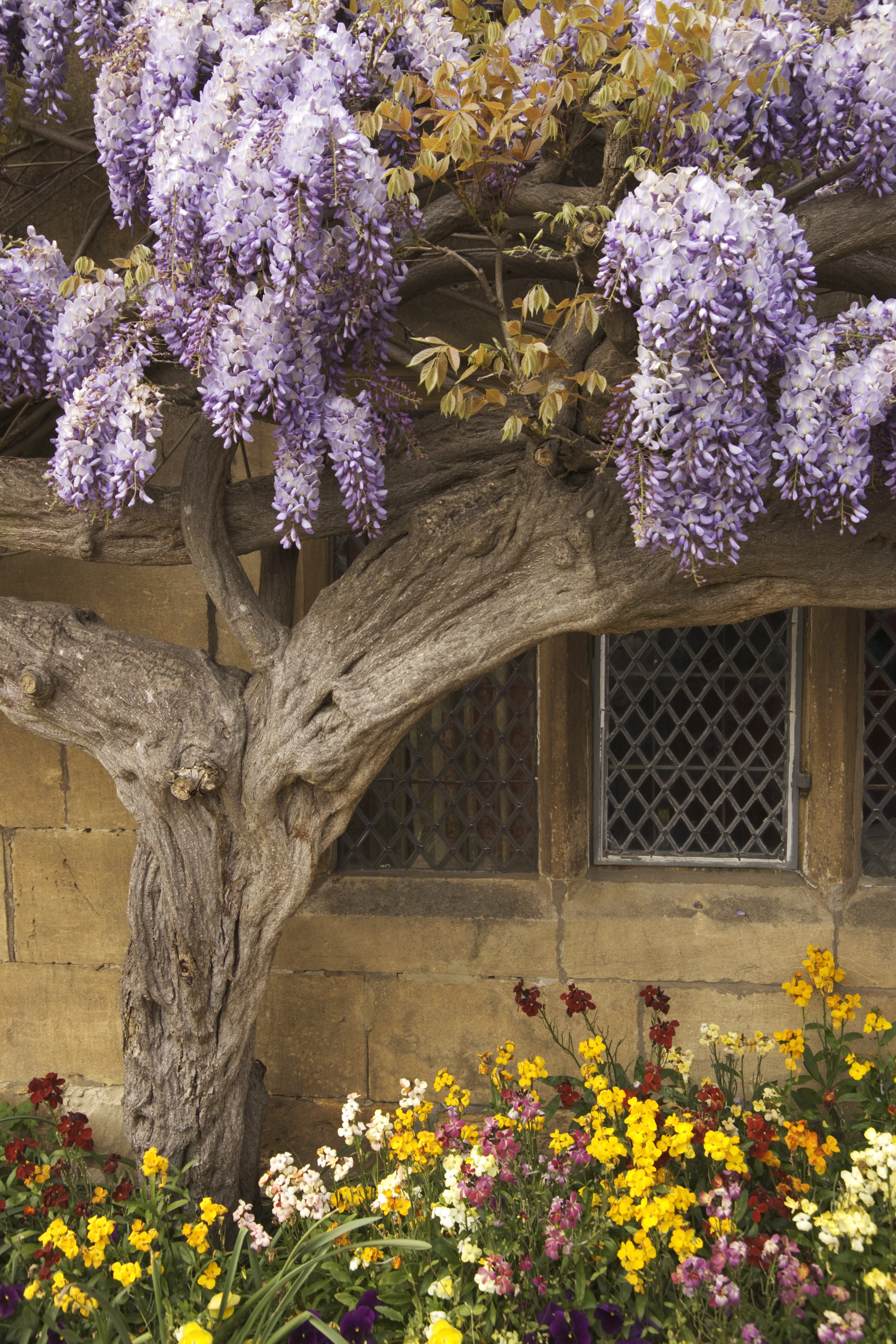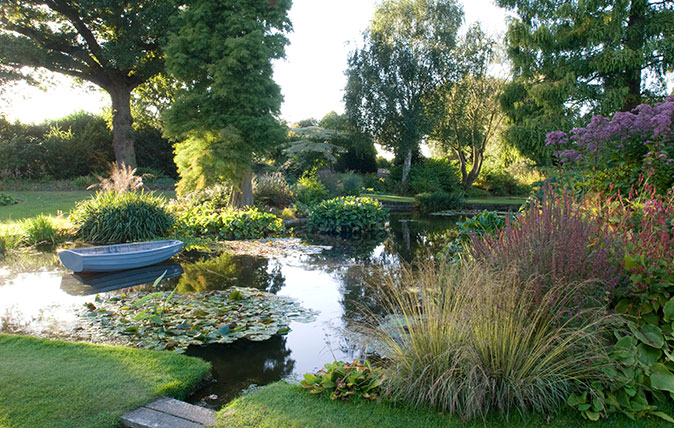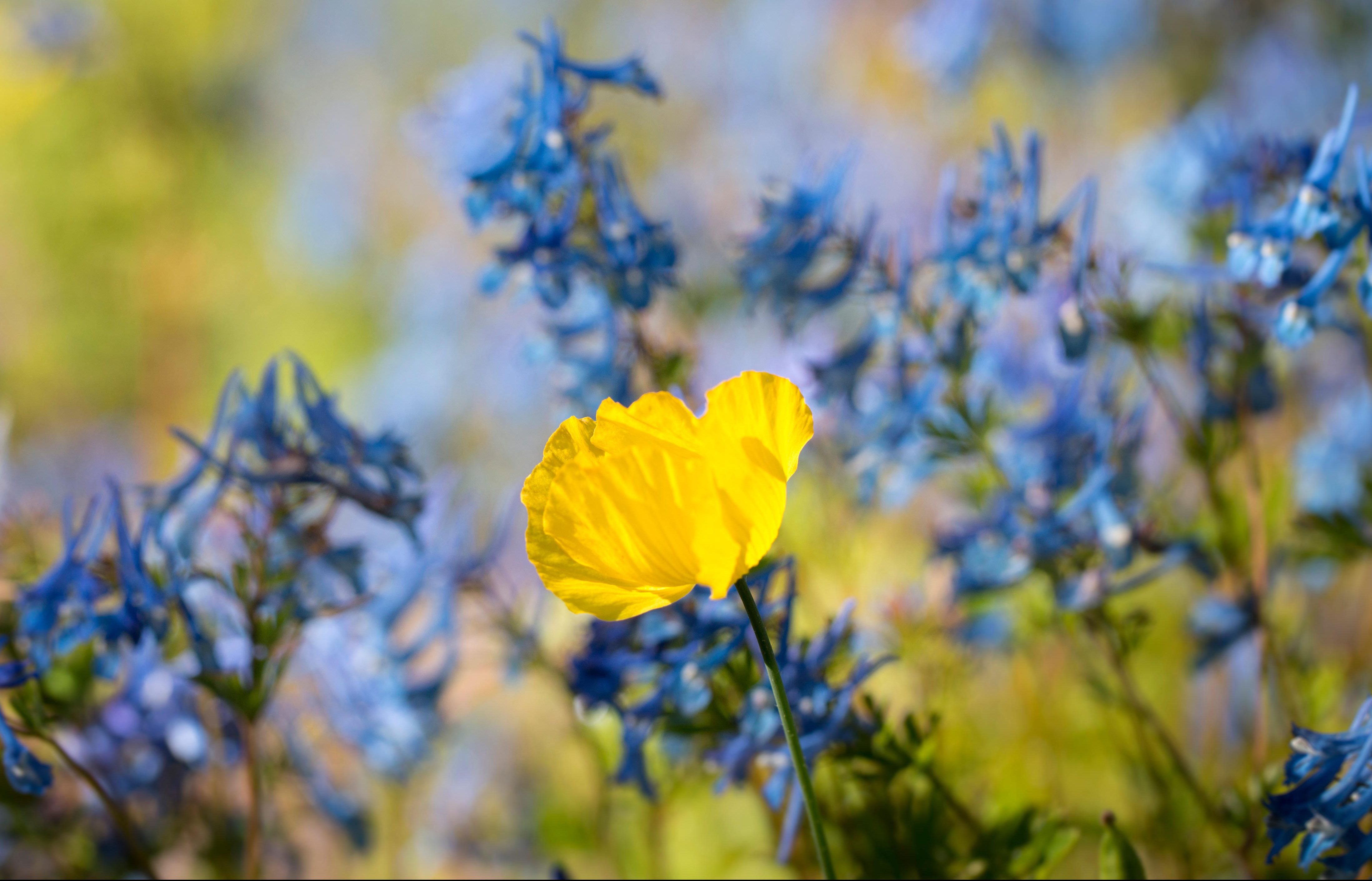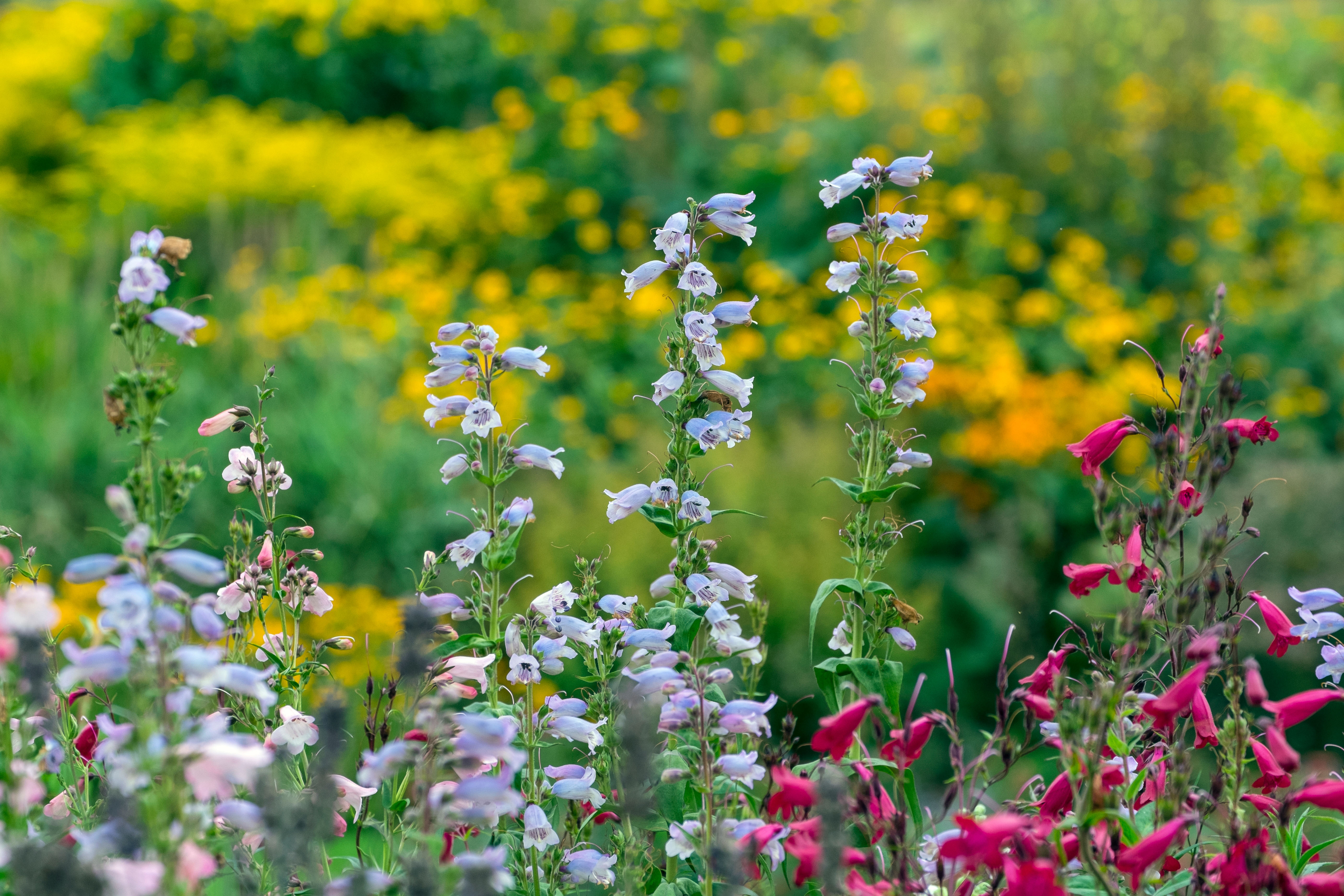Alan Titchmarsh: How to grow exotic flowers in English country gardens
Alan Titchmarsh shares his tips on bringing exotic blooms to life in the gardens of Britain.


A touch of the exotic in our gardens will probably be appreciated more this year than ever before, with so many travel restrictions and the to-ing and fro-ing about who is allowed to go where and when and how long they must sit at home and mope all alone afterwards. At least if we grow something that is redolent of foreign climes, we can travel there in our minds without the need for a jab, a PCR test or a passport. Holidays of the mind would seem to be par for the course for many of us this year.
There is, of course, a limit to what we can grow, despite the ever-encroaching threats of global warming. The days are still far off, one hopes, before we see a cloud of bougainvillea cascading from a thatched roof in Bourton-on-the-Water and delighting coachloads of tourists visiting the Cotswolds. I can’t say I really look forward to the day when Clematis montana is consigned to history and the privet hedge is replaced by hibiscus.
That said, it’s fun to take risks with exotic plants that we stand a chance of getting through the winter. I visited a garden in north London recently and discovered the finest example of Beschorneria yuccoides that I’ve seen outside of Tresco in the Isles of Scilly. Three socking great flower spikes pushed out horizontally from the massive clump, clad in those luminous pink bracts that rivet the eye from afar.
Why do they grow horizontally rather than vertically? Because in their native Mexico they thrive on cliff faces and their flower spikes must push outwards rather than upwards. It makes sense when you think about it. I’ve planted three variegated examples in my Isle of Wight garden and await results.
Echiums seem to be extending their territory across the country as the years go by, although the April frosts did for them in my Hampshire garden this year. In our island garden they thrive, even if, each year, one or two always turn up their toes, wilt and die just before flowering. I suspect it is our heavy underlying clay that is responsible. Although the monocarpic Echium pininana might behave in this way, the shrubby and perennial E. fastuosum shows no inclination to be so mimsy. It covers itself in 1ft-high royal blue candles every May and June and shows no signs of slowing down — three or four plants, now four years old, occupy an area 20ft by 10ft and are considerably taller than me (5ft 8in).
Visiting York Gate, that glorious garden just outside Leeds made by Robin and Sybil Spencer back in the 1950s and 1960s and now run by the gardener’s charity Perennial, I saw a delightful courtyard filled with succulents. The head gardener Ben Preston explained that the plants were trundled back into the lean-to greenhouse against the tall stone wall each autumn, as even the aeoniums will not survive outside up there in the (increasingly less) frozen north. With me, on the Isle of Wight, aeoniums grow happily outdoors all year round, but then the presence of The Solent, 100 yards from our garden, prevented any frosts right through this past winter.
Tresco is renowned for its mild climate and the seemingly endless list of exotics grown under the watchful eye of Mike Nelhams, but there is another garden way down west that is worth a visit should you be passing. Above the clifftop Minack Theatre at Porthcurno in Cornwall is a terraced garden packed with plants that will put you in the holiday mood, from Californian poppies to various rare succulents and palms. The garden had a hard time of it during the winter, but Claire Batten and her team from Penberth Plants (Gold Medal winners at RHS Chelsea) are now in charge of its increasingly varied collection of denizens of the warmer countries of the world.
Exquisite houses, the beauty of Nature, and how to get the most from your life, straight to your inbox.
If all this comes as little consolation to you because your garden is far from mild, settle for the hardier types of agapanthus in raised beds or large pots, and even penstemons, which were once considered tender, but now seem as hard as nails. Both will impart an exotic feel, as will sun-loving eschscholzia (Californian poppy), raised from seed and given a sunny spot.
A banana such as Musa basjoo can be lagged with dry straw or bracken and encouraged to come through the winter, and bamboos (planted with caution and presented with a barrier in the soil if you are of a nervous disposition) will romp away and bring the jungle to your door. Risky, yes, but perhaps a safer bet than foreign travel this year.
Marigolds, Myrtle and Moles — A Gardener’s Bedside Book by Alan Titchmarsh is out now

Credit: Alamy
Alan Titchmarsh: The best time of year to plant tulips
Alan Titchmars on planting tulips - and avoiding the grind of removing and storing bulbs every year.

Credit: Getty
Alan Titchmarsh: A foolproof guide to growing wisteria
If you've been enviously eyeing the extraordinary wisteria on display across Britain this summer and wondering how you can grow

Alan Titchmarsh: How to keep a perfect pond
Alan Titchmarsh says that now is the time to clear out the weeds and keep your pond in top condition

Alan Titchmarsh: The weeds I welcome with open arms
Our columnist Alan Titchmarsh used to spend hours ridding his garden of anything he hadn't planted himself. These days he

Credit: Gary K Smith / Alamy
Alan Titchmarsh: The ultimate flower for the lazy gardener
Penstemons are easy to grow, hardy, and flower for months — even the slugs don't both them. They might just be
Alan Titchmarsh is a gardener, writer, novelist and broadcaster.
-
 Northwold Manor: 'A place of delight once more after half a century of chaos and neglect'
Northwold Manor: 'A place of delight once more after half a century of chaos and neglect'A heroic restoration project has transformed Northwold Manor in Norfolk — home of Professor Warwick Rodwell and Ms Diane Gibbs — after more than 50 years of being left neglected. It has also illuminated its remarkable history, as John Goodall explains; photography by Paul Highnam for Country Life.
-
 In search of London’s earliest pint
In search of London’s earliest pintEarly houses — pubs open in the early hours to feed and water the market trade — have been a cornerstone of London for centuries. Yet, as Will Hosie finds, they aren’t stuck in the past.
